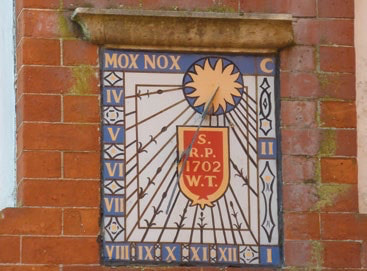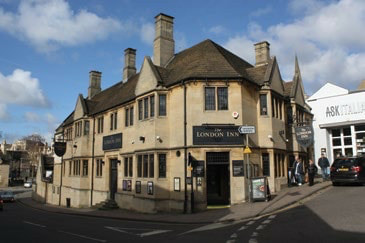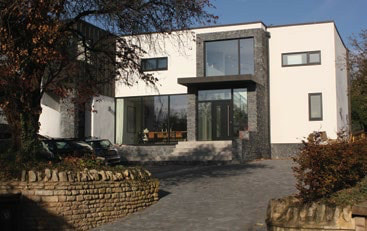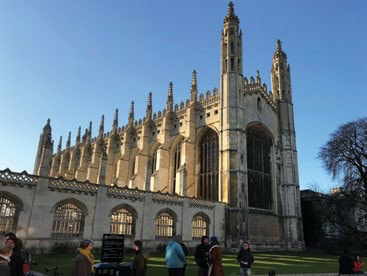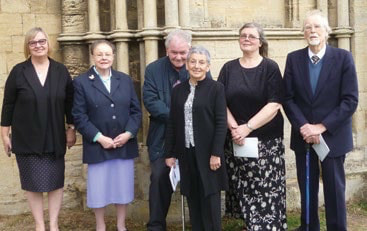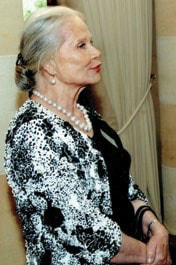Eventful times
|
Visit to Spalding Gentlemen’s Society, 14th November 2017
The Spalding Gentlemen’s Society was founded in 1710 by Maurice Johnson, a local antiquary and lawyer, to provide gentlemen with a convivial opportunity to discuss new ideas and discoveries. The all-male club (women were only admitted as members from 2006) met on Thursdays – the day that The Tatler, a new literary and society journal, reached Spalding. The Society’s original aim was to “support mutual benevolence and their improvement in the liberal sciences and in polite learning”. The only subjects barred were religion and politics. Notable members included William Stukeley, Sir Isaac Newton, Alfred, Lord Tennyson and Sir Joseph Banks. |
Dr Melissa Thompson, Designation Adviser at Historic England, “70 Years of Listing Buildings”, 8th February 2018
|
Melissa highlighted how special Stamford is, with 447 entries in Historic England’s List (covering over 600 buildings). 102 are Grade II*, and eight Grade I.
Not everything makes the grade. Two of her first cases as a Listing Advisor were the London Inn and Domino’s but as interiors had been lost they did not meet criteria for listing. Listing is the act of identifying the most important parts of our built historic environment so they can be protected by law. It is a criminal act to carry out works on listed buildings without the necessary consent, and owners can be prosecuted and required to reinstate original features. The Listed Building Consent system is administered by Local Authorities, guided by statutory criteria, with involvement of Historic England if a building is listed at Grade I or II*. |
Melissa explained how the legal protection framework developed from first involvement by the State in 1882. Listing was established through the Town and Country Planning Acts of 1944 and 1947. Now almost 378,000 entries are on the List, including modern buildings. The 1986 Lloyd’s Building in London by Richard Rogers Partnership, listed in 2012, is one of the newest Grade I listed buildings.
Simon Harris of Harris McCormack Architects, “An Architect’s Thoughts on Building in Stamford in the 21st Century”, 12th April 2018
|
Simon also highlighted the differences between private and commercial projects and pointed out that enhancement is as important as preservation. Simon began by describing himself as a “Man of Passion” who, through his architectural work, aimed to protect and enhance whole areas and individual buildings. He stressed that buildings, particularly those that are listed, need to be considered in context within their surroundings and that materials and detail are all important.
Simon illustrated his talk with recent and past examples of his work in Stamford. These included the planning and detailing of eight new houses in Marshall’s Yard, the efficient use of polystyrene and concrete for the walls in a striking modern house on Priory Road and the thoughts that led to an exciting modern extension in Water Street. Simon outlined the different processes that need to be passed through as a building evolves. These are: client finance; important consideration of materials; the enforcement of attention to detail and understanding; the quality control of materials and workmanship; and the reinforcement of a moral obligation towards the work in progress. |
Visit to Cambridge, 12th June 2018
|
A small band of enthusiastic members visited Cambridge, returning the Cambridge Blue Badge Guides’ visit to Stamford in 2016. Our host was guide Liz Hodder, who entertainingly and informatively led us around the core of the historic university town. There was then free time to enjoy the many visual and epicurean attractions.
|
“Within the Arches” – opening St Leonard’s Priory for Heritage Open Days, 8th and 9th September 2018
|
More than 180 people visited St Leonard’s Priory to explore the site and see inside the ancient remains of this Norman priory – the oldest building in Stamford. We collected lots of memories of people who had played around the Priory as children when the site was overgrown and the Priory in a bad state of repair.
St Mary’s Schola brought the event to a peaceful and evocative close on Sunday by singing Compline – the final service, or office, of the monastic day |
“Anne-Marie Evans and the Botanical Art Revival”, 25th September 2018
|
The life and achievements of Stamford’s world-renowned botanical artist Anne-Marie Evans were celebrated at a film premiere screened for members of the Society and the St Peter’s Community Group. The film, made by Barbara Keene and Peter Butler, highlights her extraordinary life from the perspective of family members, other artists, her students and friends.
Born in France, the daughter of Capt. and Mme Boillot, Anne-Marie has led a well-travelled life. After art school training in England in the 1950s she turned away from abstract themes and became captivated by botanical art and the challenges of combining scientifically accurate images with aesthetically pleasing portrayals. After researching botanical art collections she formulated a 5-step method for painting and has been teaching since the 1980s, notably developing the first Diploma Course in Botanical Painting in the UK. Other highlights of her career include writing, with her late husband artist Donn Evans, “An Approach to Botanical Painting” (1983), regarded by many as one of the definitive books on this subject. She also collaborated with the American textile designer Kaffe Fasset and led the selection panel that determined paintings to be included in the “Highgrove Florilegium” for HRH Prince of Wales. Her awards include an MBE and the Royal Horticultural Society’s Veitch Memorial Medal. |

